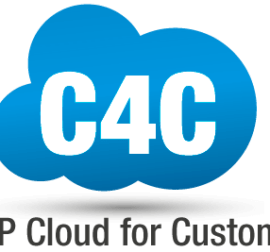 Contact us
Contact us Pardot Winter/Spring ‘21
With the 2021 updates, setting up Pardot becomes faster and easier than ever before. You can manage interaction data streams with First-Party Tracking, and take advantage of new email personalization, deliverability, and reporting features. Clone actions have also been enhanced, allowing you to quickly copy email content or new asset types associated with your campaigns. Here is just a quick overview of the main new features.
1. Drag-and-Drop Pardot Lightning Email Builder
One of the most anticipated features was introduced in the Winter ‘21 release. Pardot users now have an option to create an email using a drag-and-drop email builder. Creating content has been simplified: resize and move blocks, add in and style buttons, preview mobile email versions, store and share images from Salesforce CMS.

2. New Pardot Email experience
- Preview (as well as an individual recipient) and test emails from the email content record. Send a test email to a test list or individual email addresses before sending it to a large recipient list.
- Find email reporting KPIs (click-through rate, opt-out rate, etc.) on the Email Content record Engagement Metrics.

3. Cloning Campaigns with Related Assets
Marketing campaigns can be now cloned with related assets, which can be found on related lists on the Salesforce campaign. Pardot enables you to choose which types of assets to clone, furthermore their content and relationships are automatically copied to the new asset records.

4. Protect Prospect Activity Data with First-Party Tracking
To track prospect activity, Pardot used to place third-party cookies on visitor’s web. Since there has been a big shift in the industry and web browsers are moving from third-party cookies to first-party cookies, Pardot releases its first-party tracking feature. It prevents the loss of prospect activity data, increases campaign attribution versatility, and blocks traffic that does not originate from your domains.
5. Specify a Link for Completion Actions
Pardot Completion actions based on email clicks were not associated with a particular link in the email. Instead of only firing when a specific link was clicked, the completion action would go off if any link was clicked. Now it is possible to specify the link completion action that should be applied to.

6. Analyze Email Content Performance with Custom Report
With the latest release, Pardot enables creating a custom report type for the “Email Content” object to help display engagement data and email content performance.
7. Pardot User Authentication is Being Retired
Pardot’s user authentication system was discontinued on Feb. 15, 2021. All users must now use Salesforce single sign-on (SSO).
8. Resync Prospects with Resolved Errors
Previously, prospects with resolved errors had to be manually synced or reimported. Pardot now has a new option on the Prospect Sync Errors page tab which allows admins to mass select and sync resolved errors with Salesforce.
9. Success Milestones for Pardot Einstein Attribution
Einstein Attribution is a useful feature that combines Campaign Influence with Einstein’s Intelligent analysis to calculate and allocate marketing contribution to each touchpoint, so you can analyze which campaigns were most effective at generating pipeline. Previously, opportunity creation was chosen as a success milestone by default. Now, it is possible to choose a success milestone that is suitable for your business either during initial setup or retain the existing model with new criteria.
10. WordPress Pardot Plugin Updates
WordPress Block Editor and Pardot WordPress Plugin are now compatible, which means you can apply Pardot forms and dynamic content blocks to WordPress pages.
Aida Khadzhibiekova, Salesforce consultant


